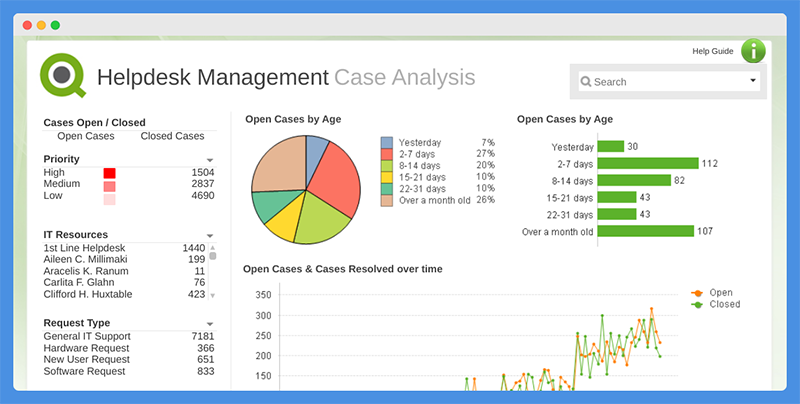Personal Career & Learning Guide for Data Analyst, Data Engineer and Data Scientist
As a data analyst, it’s essential to have a clear understanding of the tools and technologies you use. This is particularly important when working with QlikView, a popular data visualization and business intelligence platform. In this article, we’ll take a closer look at two important concepts in QlikView – sheets and objects.
What are Sheets in QlikView?
Sheets in QlikView are similar to worksheets in a spreadsheet program. They are the place where you create your visualizations, perform data analysis, and more. Each sheet in a QlikView document can contain a variety of objects, including charts, tables, and text boxes.
Sheets in QlikView are highly customizable, which means that you can adjust the size, color, and layout of the objects on the sheet to meet your needs. You can also create multiple sheets within a single QlikView document, which makes it easy to switch between different views of your data.
What are Objects in QlikView?
Objects in QlikView are the individual components that make up a sheet. They can include charts, tables, text boxes, and more. Each object in QlikView can be customized to meet your needs, including the size, color, and layout of the object.
Some of the most common objects used in QlikView include:
- Charts: Charts are one of the most common objects in QlikView. They allow you to visualize your data in a graphical format, making it easier to understand and analyze the data.
- Tables: Tables are another common object in QlikView. They allow you to view your data in a tabular format, making it easier to understand and analyze the data.
- Text Boxes: Text boxes allow you to add text and other information to a sheet in QlikView. They can be used to add captions, headings, or other information to a sheet.
How to Create Sheets and Objects in QlikView?
To create sheets and objects in QlikView, you need to use the QlikView Desktop. This is a graphical user interface that allows you to create, edit, and manage your QlikView documents.
To create a sheet in QlikView, you simply need to go to the “Sheet” menu and select “New Sheet”. This will create a new, empty sheet in your QlikView document.
To create an object in QlikView, you need to first select the sheet that you want to add the object to. Then, go to the “Objects” menu and select the type of object that you want to create. For example, if you want to create a chart, you would select “New Chart”.
Once you have created a sheet and added objects to it, you can customize the appearance and layout of the objects to meet your needs. For example, you can adjust the size of a chart, change the color scheme, and more.
Conclusion
In conclusion, sheets and objects are two important concepts for data analysts who use QlikView. Sheets are the place where you create your visualizations and perform data analysis, while objects are the individual components that make up a sheet. Understanding how to create and customize sheets and objects in QlikView can help you to get the most out of this powerful data visualization and business intelligence platform.
QlikView for Data Analyst – QlikView – Sheet and Objects
 Loading...
Loading...
Latest end-to-end Learn by Coding Projects (Jupyter Notebooks) in Python and R:
All Notebooks in One Bundle: Data Science Recipes and Examples in Python & R.
End-to-End Python Machine Learning Recipes & Examples.
End-to-End R Machine Learning Recipes & Examples.
Applied Statistics with R for Beginners and Business Professionals
Data Science and Machine Learning Projects in Python: Tabular Data Analytics
Data Science and Machine Learning Projects in R: Tabular Data Analytics
Python Machine Learning & Data Science Recipes: Learn by Coding
R Machine Learning & Data Science Recipes: Learn by Coding
Comparing Different Machine Learning Algorithms in Python for Classification (FREE)
There are 2000+ End-to-End Python & R Notebooks are available to build Professional Portfolio as a Data Scientist and/or Machine Learning Specialist. All Notebooks are only $29.95. We would like to request you to have a look at the website for FREE the end-to-end notebooks, and then decide whether you would like to purchase or not.
